Affiliate disclosure: This post may contain affiliate links. Please see our Privacy Policy.
Elderflower tincture is a gentle herbal remedy for colds, flu, and other minor illnesses. It’s easy to make at home with just a few simple ingredients!
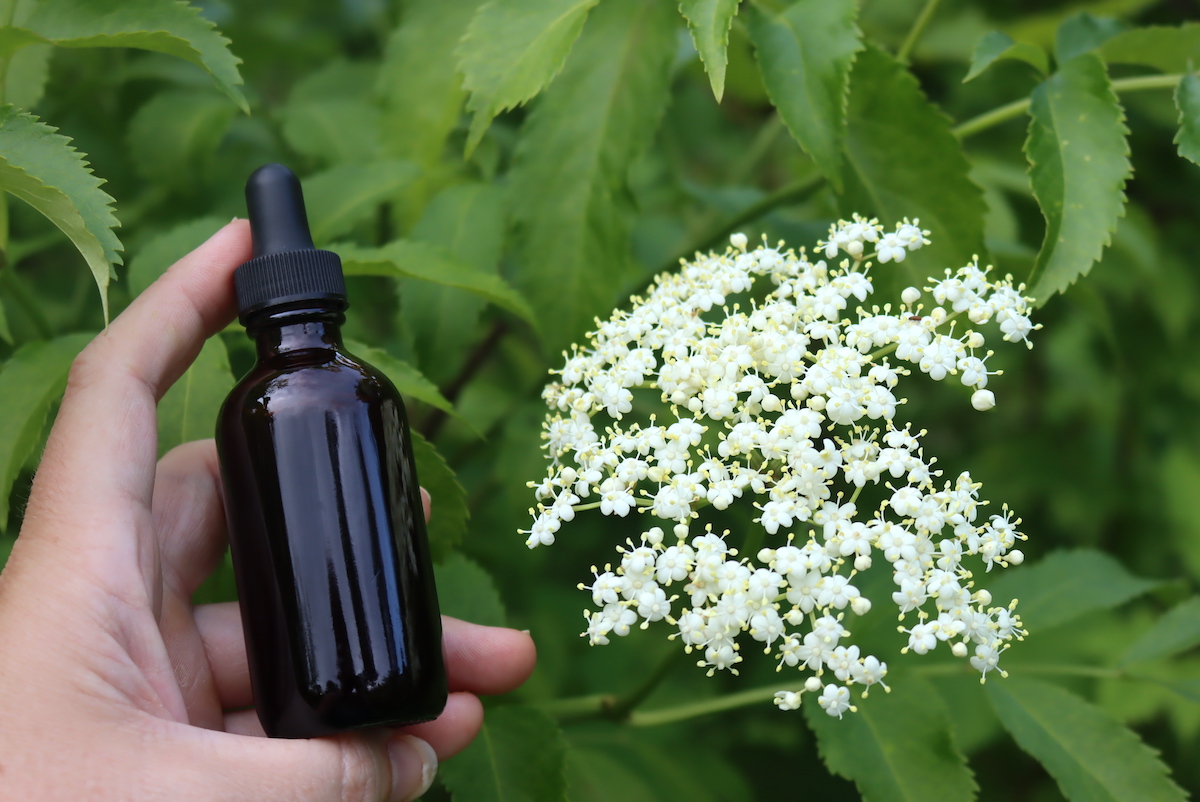
Elderflowers are a beautiful part of the natural landscape, and many people forage elderflowers for both food and medicine. Elderflower recipes often use these beautiful flowers for their sweet floral flavor, but they’re also medicinal!
Elderflowers are common in herbalism and naturopathic medicine—particularly for their antiseptic, anti-inflammatory, and antibacterial properties.
These gentle flowers work exceptionally well in tincture form, and it’s a delicious way to take them (not all that different from an elderflower cordial, just without the sugar). They also work well in other herbal preparations, like herbal-infused honey or a homemade elderflower wine.
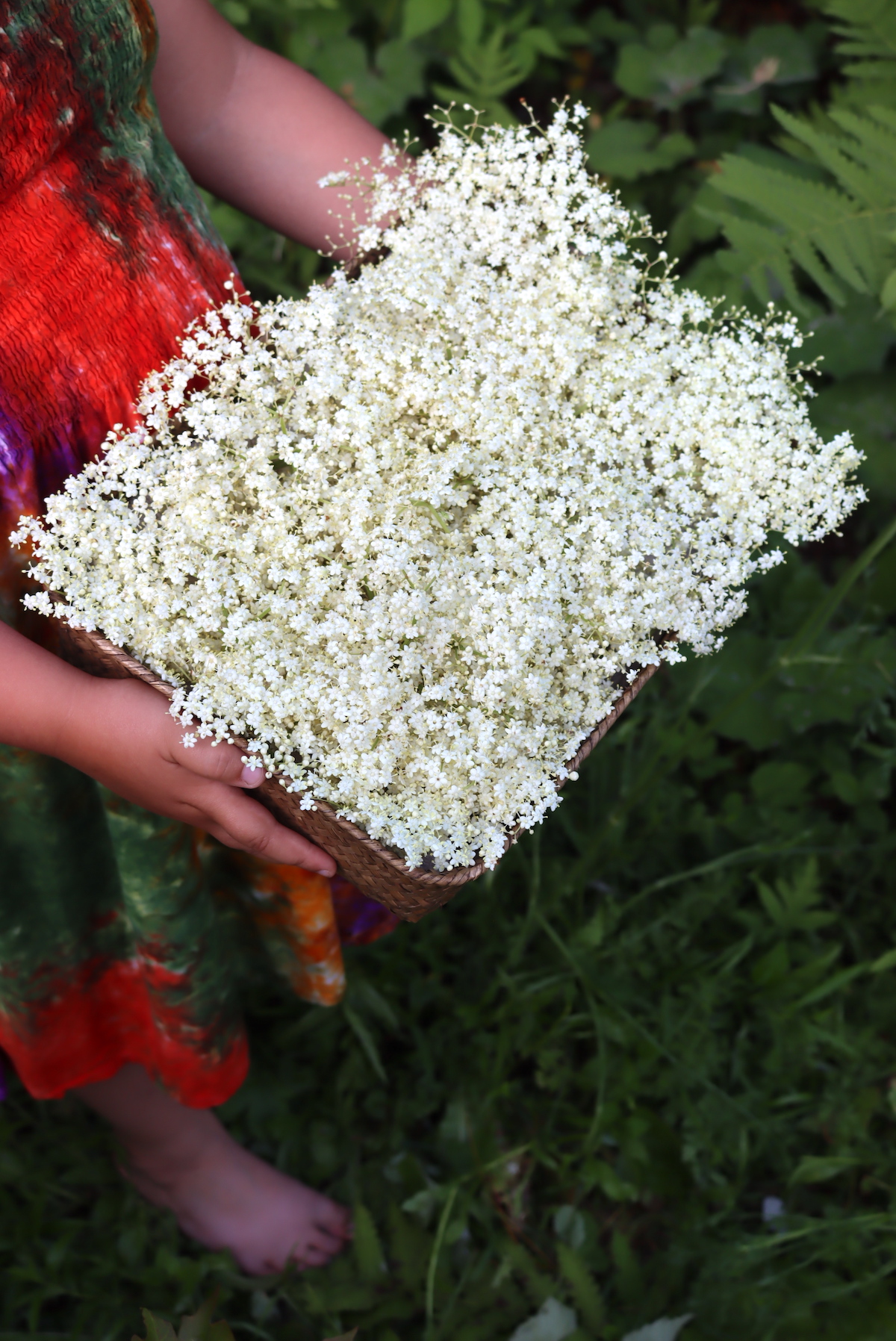
(Always consult your doctor or a clinical herbalist before trying any new herbal remedy, as there’s always the possibility of unintended consequences, allergic reaction, or interactions with other medication. If you’re harvesting wild plant material, make sure you’re 100% confident in your identification and consult multiple sources for your ID. The following is based on my research and experience, but I don’t claim to have any certifications that would qualify me to advise you on your health. Please do your own research and always verify with multiple reputable sources.)
Benefits of Elderflower Tincture
Elderflowers are naturally antiseptic, anti-inflammatory, and antibacterial. They’re also a rich source of flavonoids that have antioxidant and immunologic properties.
These flavonoids are thought to contribute to the plant’s success when used as an expectorant (something that clears phlegm from the airways) to treat bronchitis, the flu, and sinus congestion. In one study, elderflower and elderberry were shown to be effective against certain types of staph infections (most notably on methicillin-resistant Staphylococcus aureus MRSA).
Add in natural anti-inflammatory and antiseptic properties, and it’s no surprise that elderflower tincture is commonly used to treat colds, flu, sinus infections, and other minor illnesses. It’s a gentle remedy, so it’s especially popular with herbalists who treat young or elderly patients.
Elderflower tincture can also be taken as a diuretic or laxative, as it promotes the movement of wastes through the body. Be sure to stay hydrated when using elderflower tincture.
(If you’re avoiding alcohol, you can also make elderflower vinegar for a similar effect, though this is most commonly used as “food medicine” since it’s not ideal for drinking straight. A herbal glycerite also works, and is a bit more palatable than herbal vinegar.)
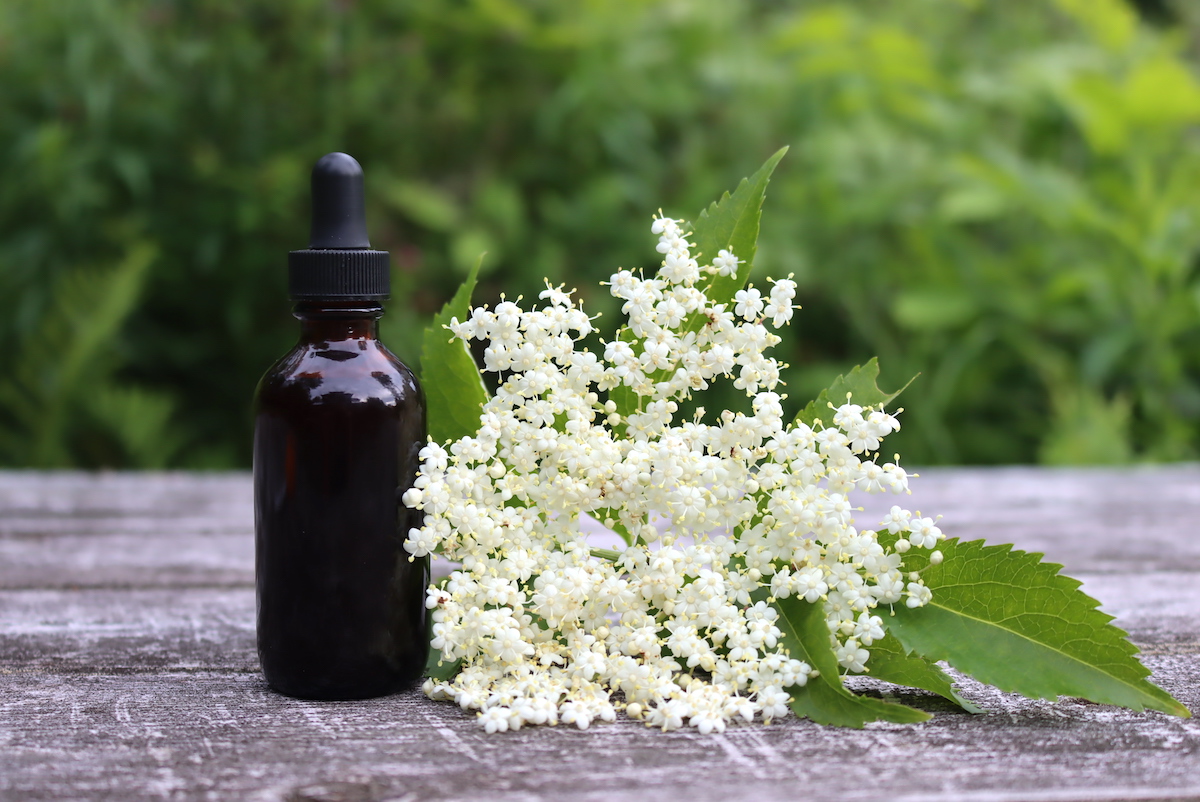
How to Make Elderflower Tincture
To make an elderflower tincture, you’ll need the following ingredients and equipment:
- Fresh or Dried Elderflowers, stemmed
- Vodka (or any other palatable alcohol that’s at least 80 proof/40 percent — there’s no need to splurge here, I always use Smirnoff because it’s inexpensive and has a neutral taste)**
- One-pint mason jar with lid (amber glass is ideal, but as long as you keep the tincture away from light at all times it won’t make a difference)
- Funnel
- Cheesecloth
- Fine mesh sieve
- Amber glass tincture bottles (with dropper)
**Never use isopropyl/rubbing alcohol for tinctures (or any other remedy you plan on ingesting). Even in small amounts, this type of alcohol is toxic and meant for external applications only.
To make the tincture, fill a mason jar about 2/3rds of the way full with fresh flowers (or about 1/2 way full of dried elderflowers).
Cover the elderflowers with vodka, or whichever alcohol you’ve chosen, and seal the jar with its lid.
Keep the developing tincture in a cool, dark place, and give the jar a gentle shake every few days.
After about 4 to 6 weeks, it’s time to strain for use.
Carefully strain the tincture through a double layer of cheesecloth, and then sore in small amber glass tincture bottles.
Once the tincture has been decanted, label the tincture bottles with the date and suggested dosages (I use a small piece of masking tape and a marker, it peels off easily when I’m ready to use the bottle for something else).
For more information on the general process, I’d suggest reading this guide to making herbal tinctures at home.
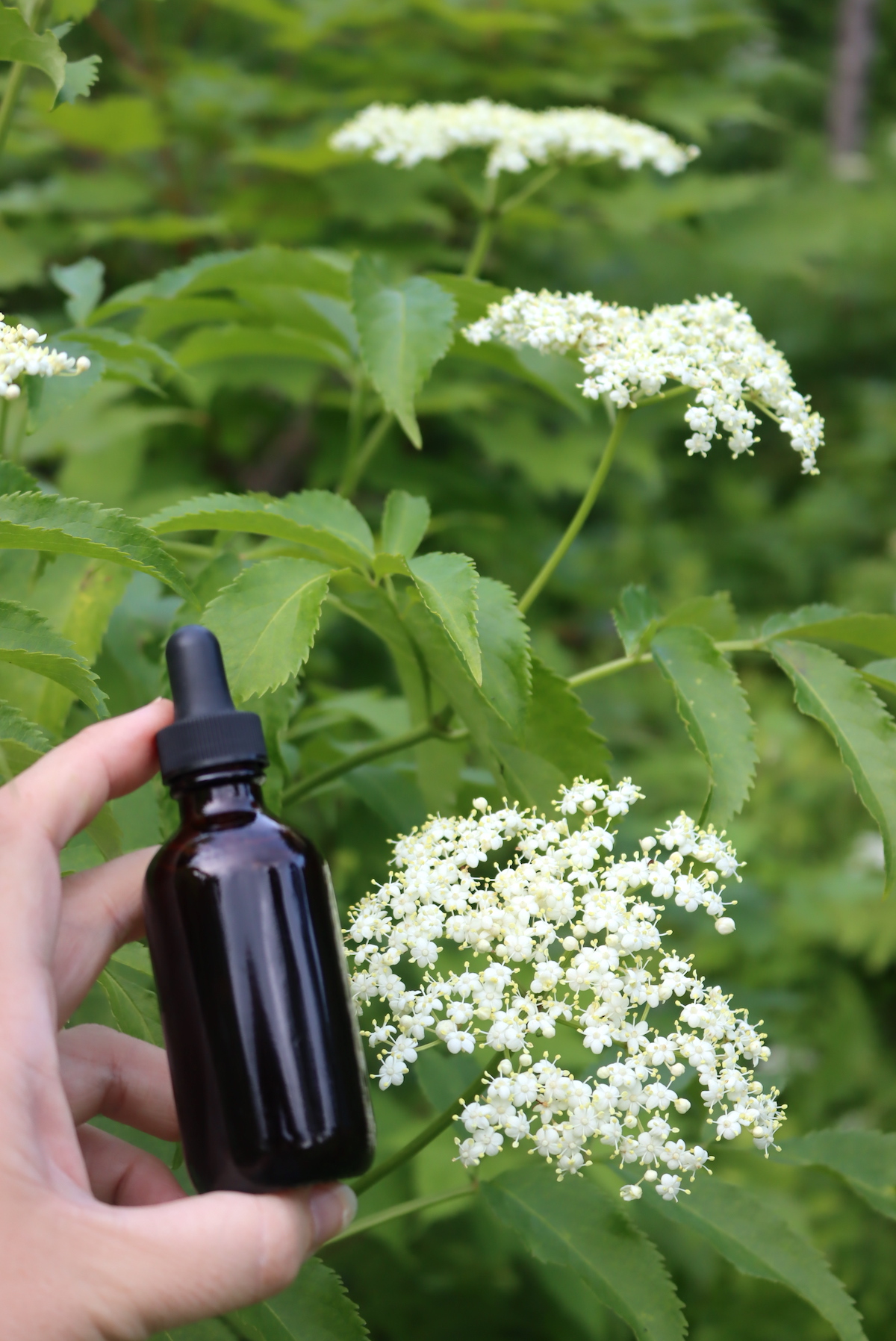
Elderflower Tincture Dosage
For an exact dosage specific to your body and needs, I’d suggest consulting a clinical herbalist.
Generally, the dosage for elderflower tincture is 1 to 2 droppers full taken three times per day. You can put it directly onto your tongue with the dropper or dilute it in a bit of water.
Elderflower Formulations
I tend to make elderflower tincture as a mixture with other gentle herbs to promote wellness when I’m a bit under the weather. Nothing too strong or specific, but just complimentary herbs that will help reduce inflammation and promote relaxation until I’m better.
Good choices include linden flowers, which have similar medicinal properties and are deeply relaxing. Lavender and chamomile are also good choices.
If you’re interested in the science behind combining herbs to enhance their effectiveness, I’d recommend taking this online course in Mastering Herbal Formulations from the Herbal Academy. It covers the science of blending herbs into homemade formulations in detail.
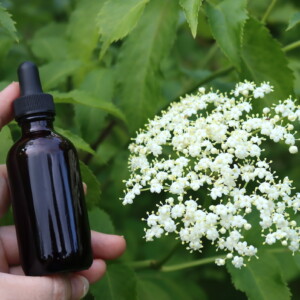
Elderflower Tincture
Equipment
Ingredients
- Fresh or dried elderflowers from the Sambucus nigra plant
- High-proof alcohol vodka, brandy, or rum, 60 proof or higher
Instructions
- Harvest fresh elderflowers when they are in full bloom. Gather enough to fill your mason jar about halfway. If you’re using dried elderflowers, aim to fill your jar about 1/3 to 1/2 full. Gently shake or rinse the flowers to remove any dirt or bugs. For fresh flowers, avoid packing them too tightly as they contain moisture and will settle once submerged in alcohol.
- Place the elderflowers into your clean jar, making sure they are well-covered. Pour your high-proof alcohol (vodka is most common, though brandy or rum work well) over the flowers until they are completely submerged. The alcohol level should be about an inch or two above the plant material to ensure full immersion.
- Close the jar tightly with its lid and give it a good shake. This helps to mix the herbs and alcohol and ensures the plant material is fully soaked. Store the jar in a cool, dark place, like a cupboard or pantry, and allow the herbs to infuse for 4 to 6 weeks.
- During the infusion period, shake the jar gently every few days. This helps to keep the plant material submerged and encourages the alcohol to extract the beneficial compounds from the flowers.
- After 4 to 6 weeks, it’s time to strain the tincture. Place a cheesecloth or fine mesh strainer over a clean bowl or jar, and pour the tincture through it to separate the liquid from the plant material. Press on the flowers to extract as much of the liquid as possible.
- Once strained, pour the tincture into dark glass storage bottles to protect it from light, which can degrade its potency. Be sure to label your tincture with the date, ingredients, and dosage information. Store it in a cool, dark place, where it should remain potent for several years.
Notes
Usage and Dosage
Elderflower tincture is commonly used for its immune-boosting and anti-inflammatory properties. It can help ease the symptoms of colds, flu, allergies, and congestion. It is also traditionally used for its calming effects, helping to reduce anxiety and promote restful sleep. Typical Dosage: The usual dosage for elderflower tincture is 1 to 2 teaspoons, 2 to 3 times per day. You can take it directly, or dilute it in a small amount of water or tea. For Respiratory Health: Elderflower tincture is often used to help relieve symptoms of colds, coughs, and sinus congestion. Its diaphoretic properties can help promote sweating to reduce fever and ease discomfort. For Relaxation: A few drops before bedtime can help calm the nerves and promote sleep, especially if you are dealing with stress or anxiety.Alcohol-Free Glycerite Option
For those who prefer to avoid alcohol, you can make an alcohol-free glycerite tincture using vegetable glycerin. To do this, use a 3:1 ratio of glycerin to distilled water for dried elderflowers. If you are using fresh elderflowers, use 100% vegetable glycerin and skip the water. Follow the same basic procedure: fill the jar with your plant material, cover it with the glycerin mixture, and let it steep for 4 to 6 weeks, shaking it daily. Once done, strain and transfer to a dark storage bottle.Yield and Storage
The amount of tincture you yield will depend on how much elderflower you use, and how tightly you pack the jar. For fresh flowers, you can expect to end up with slightly more tincture than the alcohol you started with due to the moisture content of the flowers. With dried flowers, you may get slightly less than the alcohol volume, as the flowers absorb some of the liquid during infusion. You will need about 2 to 3 cups of alcohol for a quart-sized jar, or 1 to 1.5 cups for a pint jar. Be sure the plant material stays submerged throughout the process to ensure optimal extraction.Disclaimer on Homemade Herbal Remedies
I’ve been foraging wild medicines and treating my family with herbal remedies for the past 20 years, but I’m self-taught. Be aware that I am not a clinical herbalist, and this is based on my own research and personal experience using medicinal plants. I do not claim to have the experience that’d qualify me to advise you on your health, and I’m only providing this as a reference to encourage a broader interest in medicinal plants.
Please use this as a jumping-off point, but always do your own research and verify anything you read with multiple sources.
It’s always possible to have an adverse reaction to any medicinal herb, and plenty of people are allergic to even gentle herbs like chamomile. Always consult your doctor or a certified herbalist before trying any new medicinal plant. Often, they can have unintended reactions in combination with other herbs and supplements, and many herbs have side effects even when they are effective for their intended purpose.
If you are seriously interested in herbal medicine, I’d suggest investing in a course in herbal medicine, and I’d recommend any of the online courses put out by the Herbal Academy of New England. Specifically, the introduction to herbal medicine course and the family herbalist group of courses.
They also have a mushroom course, covering both medicinal and edible mushrooms, and a Botany and Wildcrafting Course. I’ve taken both and they’re informative, inspiring, and artfully presented.
Herbal Tinctures
Interested in making other homemade herbal tinctures?
- Yarrow Tincture
- Chickweed Tincture
- Elderberry Tincture
- Dandelion Tincture
- Burdock Tincture
- Echinacea Tincture
Herbal Medicine Making
Herbal medicines don’t stop at tinctures! Learn how to make more homemade medicine…
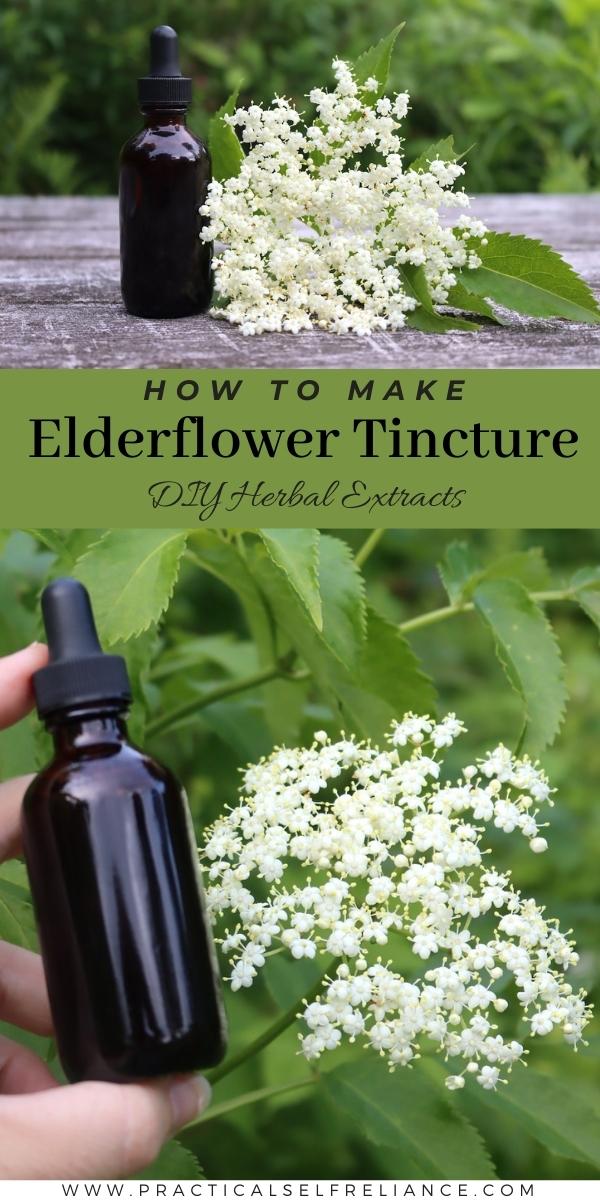
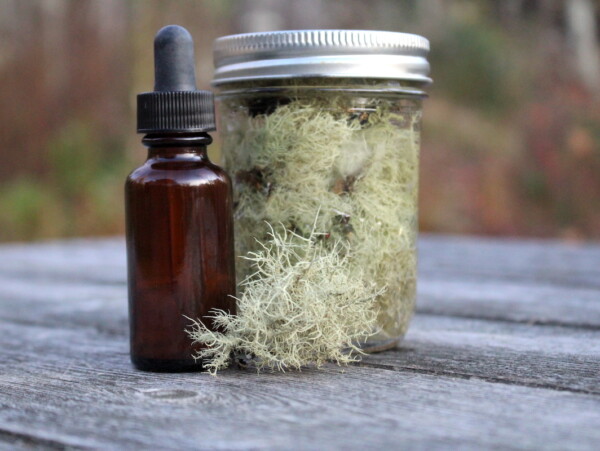
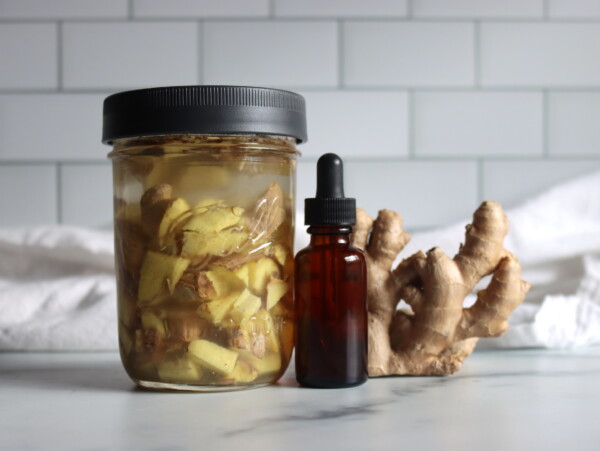
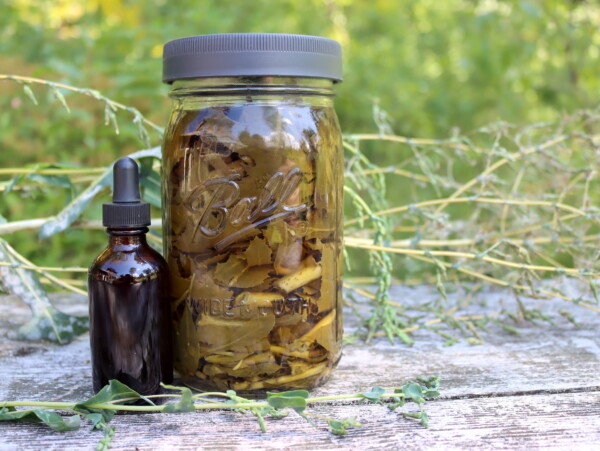
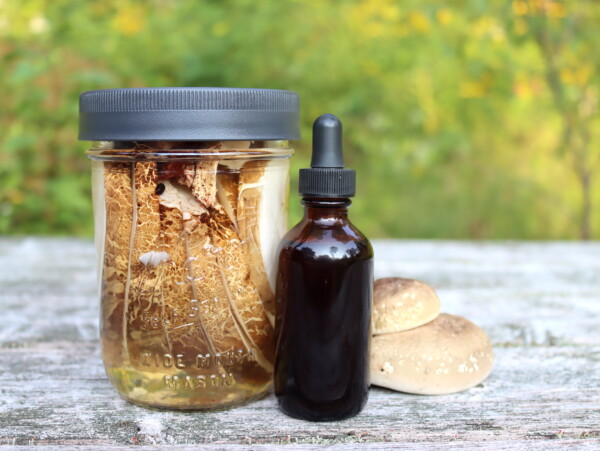










Dear Ashley,
I tried to make elderflower tincture last year and forgot it in the cupboard for six months instead of six weeks before decanting. Do you think it is still Ok to use it?
regards
Eija
As long as the plant material is still under the alcohol, it should be fine.